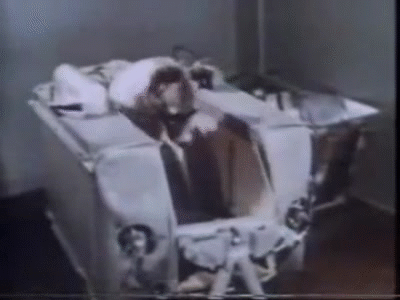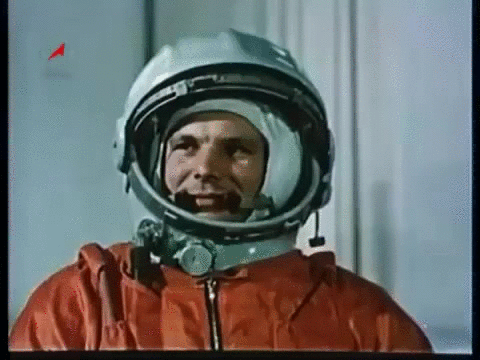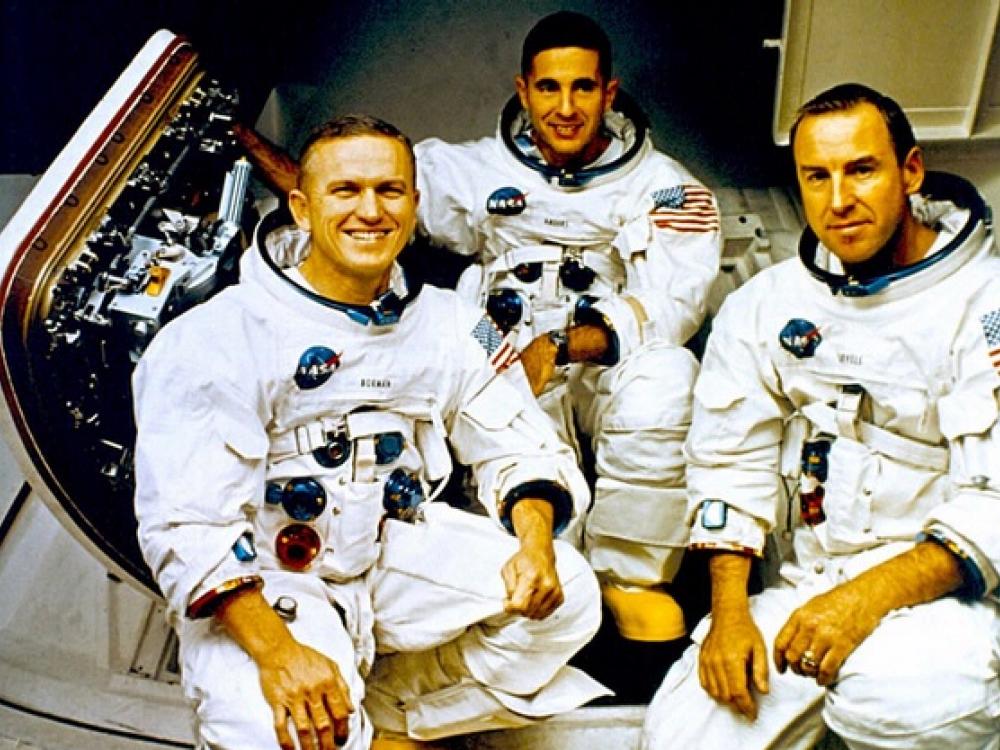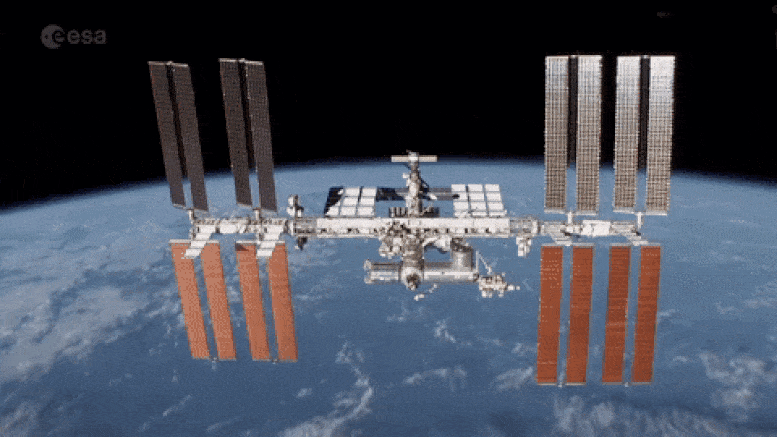
Space Race Timeline

2 AUG 1955
So it begins…
The USSR responds to the announcement made by the US of their intention to launch the 1st artificial satellite into space by launching a satellite of their own.
FUN FACT
Zambia is one country you do not hear about often. It is a landlocked country tucked somewhere in south-central Africa. In 1964, it joined the space race and planned to land a man on the moon before the US or the Soviet Union ever did. This was five years before Neil Armstrong stepped foot on the moon.

4 OCT 1957
The first successful satellite
The USSR successfully launches Sputnik 1 into space, the first Earth-orbiting satellite in history.
FUN FACT
The US Navy's Vanguard 1 was the first solar-powered satellite. Launched on 17 March 1958, it remains the oldest human-made probe in orbit. Although communication with the satellite is now lost, it will stay in space for many years to come.

3 NOV 1957
First Doggo in space
The USSR successfully launched Sputnik 2 into space, which carried a dog named Laika into space. They become the first nation to successfully send a living organism into the orbit.
FUN FACT
Did you know that the first animals sent into space were fruit flies

31 JAN 1958
The US finally joins the race!
The US finally enters the Space Race by launching Explorer 1, the 1st US satellite to reach orbit. It also carried experimental equipment which led to the discovery of the Van Allen radiation belt.

1 OCT 1958
NACA to NASA
The National Aeronautics and Space Administration (NASA) was created in the US and replaced the National Advisory Committee on Aeronautics (NACA).
FUN FACT
In the 1950s an ongoing discussion began at NASA between astronauts and cosmonauts. The deputy administrator wanted to name US travellers in space as cosmonauts, the term applied to Russian spacemen. He felt that "cosmos" was more applicable to space travel than just the term used to stars (or "Astro"). However, while he made a clear point, he was outvoted by his peers.

18 DEC 1958
A SCORE for the US
The US launched SCORE, the 1st communications satellite. It captured the entire world's attention by broadcasting a pre-recorded Christmas message from US President Dwight D. Eisenhower, becoming the first broadcast of a human voice from space.

2 JAN 1959
Cosmic Rocket
The USSR launched Luna 1, known as the first "cosmic rocket" as it inadvertently escaped the orbit of the Moon due to the object carrying too much velocity. Luna 1 became the 1st human-made object to exit the orbit of the Earth and orbit the sun instead!
2 AUG 1959
First satellite image of Earth
The US launched Explorer 6, the world's 1st weather satellite and obtained the first few images of the Earth from outer space.

12 SEP 1959
Luna 2 the moon
The USSR launched Luna 2 into space and managed to accomplish its mission of creating the 1st spacecraft to ever reach the surface of the Moon.

4 OCT 1959
Luna 3 go round
The USSR launched Luna 3 and succeeded in their mission of sending an object into orbit around the Moon and photographed the far side of the Moon.

19 AUG 1960
First animals to return from space
The USSR launched Luna 5, which had two dogs named Belka and Strelka as well as a range of plants on board. They became the first animals and plants to return to earth from space alive.

31 JAN 1961
Ham
Ham, a US chimpanzee, became the first hominid (or great ape) to be sent into space and the first of its kind to successfully survive after landing
FUN FACT
While the US often sent primates on test flights, the Soviet Union preferred to use dogs. They were seen to be more obedient, and Moscow stray dogs were reckoned to be more equipped to deal with the extreme conditions and potential hunger of space travel.

12 APR 1961
Gagarin the man
The Soviet Union achieved a clear triumph in the Space Race. Aboard the Vostok 1, Yuri Gagarin made 1 entire orbit around the Earth and became the first man to ever reach space. He remained in space for a total of one hour and forty-eight minutes before landing back on Earth in Saratov Oblast, west Russia.
FUN FACT
On 12 April 1961, the first man in space, Yuri Gagarin asked the bus driver to stop on the route to the launchpad and urinated against the right-hand back tyre of the bus. This act has become a tradition for all astronauts travelling into space. Female astronauts bring vials of their urine to splash on the wheel.

16 JUN 1963
Civilian Tereshkova
Valentina Tereshkova became the 1st civilian as well as the 1st woman to be in space. She spent almost three days in space, orbiting the Earth an astonishingly 48 times aboard her spacecraft, Vostok 6.
FUN FACT
The evening before a cosmonaut’s launch it is mandatory to watch the popular 1970 Russian film White Sun of the Desert, which follows the adventures of a soldier who has been fighting in the Russian Civil War. The origin of this tradition is unclear, and several craters on Venus are named after characters in the film.

18 MAR 1965
The first spacewalker
Alexei Leonov left his spacecraft, the Voskhod 2, in a specialized spacesuit and conducted the first ever twelve-minute spacewalk.

14 JUL 1965
Martian Ambition
The US satellite, Mariner 4, performed the first successful voyage to the planet Mars, and returned with the first close-up images of the Martian surface.

1967
The deadly year
This year proved to be the most deadly in the Space Race for both sides, the US and Soviet Union. In January, American astronauts Ed White, Gus Grissom, and Roger Chaffee died due to a fire ignition within their Apollo 1 capsule on the launch pad. A few months later the Soviet cosmonaut Vladimir Komarov was also killed when the parachute on his Soyuz 1 capsule failed to open upon his re-entry into Earth's atmosphere.

21 DEC 1968
Apollo 8 gang
US spacecraft Apollo 8 became the first human-crewed spacecraft to reach the Moon, orbit it, and successfully return to Earth.
20 JUL 1969
A win for America
Neil Armstrong and later Edwin "Buzz" Aldrin became the first two men to walk on the Moon while their crewmate Michael Collins continued to orbit the Moon aboard the Apollo 11. This secured a victory for America in the Space Race with a televised landing that was witnessed around the world by a total of 723 million people.
FUN FACT
On 2 February 1971, Alan Shepard became the first human to play golf on the Moon. After smuggling a makeshift golf club aboard his Apollo 14 lunar mission, Shepard hit two balls just before liftoff. Find out about what's been left on the Moon

19 APR 1971
The first space station
The USSR launched the first space station. Parts of this spacecraft would eventually become core segments of the International Space Station (ISS) almost thirty years on in November 2000.
FUN FACT
The first space station was Salyut 1, launched by the Soviet Union on April 19, 1971. In 1986, the Soviet Union launched the first components of the space station Mir, which would become the first space station to be permanently manned.

1 AUG 1971
A memorable tribute
David Scott, commander of the Apollo 15 mission, became the first ever person to drive on the Moon. He's also remembered for paying tribute to the Soviet Union and US astronauts who died in the advancement of space exploration. While walking on the Moon, Scott placed a plaque with a list of all the dead. Alongside this, he left a small aluminium sculpture of an astronaut in a spacesuit, created by Belgian artist Paul Van Hoeydonck.

15 JUL 1975
US-USSR Team up
With tensions between the US and USSR softening, the first cooperative Apollo-Soyuz mission was launched. With two separate flights, the Apollo and Soyuz spacecraft docked in space and the two commanders Tom Stafford and Alexei Leonov exchanged the first international handshake. This act can be seen to symbolically end the Space Race, paving the way for future joint missions, such as the International Space Station and the Shuttle-Mir programme.
FUN FACT
The space race was extended to playgrounds. Throughout the period, the US and Soviet Union designed school playground equipment to stoke children’s interest in space travel. Playground equipment were built to imitate rockets, satellites, towers, submarines and even planets.
4 DEC 1996
Sojourner
The rover was the first wheeled vehicle to rove another planet, and was part of the Mars Pathfinder mission. It had front and rear cameras and hardware to conduct several scientific experiments.
